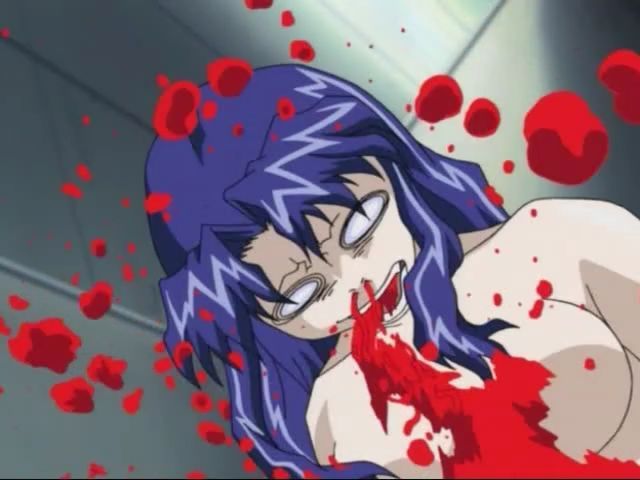
Is it possible to get an anime nosebleed?
No. Not at all. Anime nosebleeds are usually not based on any injury at all. Besides, nosebleeds in anime are unrealistic to real life. Consider this: In a real life nosebleed, blood trickles out of the nose. Now, compare that to anime, where blood flows out of the nose like a high pressure hose.
Why do people get so obsessed with anime?
The reason people can get obsessed with anime is that you can almost never grow tired of it. There is an abundance of good shows and on a wide variety of topics. This provides something for everyone. Great live action shows like Game of Thrones or The Wire or Breaking Bad only come once every few years.
When should a person worry about a nosebleed?
You should only be concerned if the nosebleeds are recurring, if you are on special blood thinning medications, or if the nosebleed was caused by trauma and you believe the nose has been broken. If the nosebleed doesn’t fit any of these criteria, then you have nothing to worry about, as long as you have enough detergent and cold water to clean the blood off your clothes.
Why do elderly people prefer reading manga to anime?
One of the greatest anime of all time with one of the best endings, Fairy Tail is all about a young mage called Lucy who wants to get into Fairy Tail, the strongest magical guild in the kingdom. The entire season runs for 9 seasons and 328 episodes.

Can nosebleeds happen like in anime?
One Piece's Sanji is another example of a lecherous man getting them frequently. Another example of the anime nosebleed, albeit an extreme case, is Karin Maaka from Chibi Vampire. While not necessarily stemming from arousal, she has some of the heaviest nosebleeds in anime history.
Why do anime characters get nosebleeds when they see a hot girl?
It's mostly used as a comic relief in anime. The anime way of telling that the guy is aroused. It is basically used as a comedic reaction to seeing something that would turn the character on.
Why do people's nosebleeds in Naruto?
In order to express a character's inner feelings, anime must use physical symbols. So nosebleeds are an exaggeration of that excitement. It's also comical, and easier for children to understand,” Tsugata said. “Nosebleeds are an exaggeration of that excitement.”
Why do anime characters have tape on their nose?
Apparently, the Band-Aid's only purpose is as an accessory to make his character design more visually interesting, or to make him look cool. Often shows up in animation, and is rarely commented on by the characters.
Who has the most nosebleeds in anime?
One Piece 's Sanji is another example of a lecherous man getting them frequently. Another example of the anime nosebleed, albeit an extreme case, is Karin Maaka from Chibi Vampire. While not necessarily stemming from arousal, she has some of the heaviest nosebleeds in anime history.
What anime character has a nosebleed?
From Master Roshi to Sanji, nosebleeds when aroused are a familiar trope to anime fans. But are they possible in real life? A staple of many comedy anime, a character getting a nosebleed when they see an attractive person is almost as old as the genre itself.
What is the trope of nosebleed?
The trope comes from an old wives' tale that when a teenager filled to the brim with hormones sees something arousing, their blood pressure rises to the point that it causes a nosebleed. Mangaka Yasuji Tanioka 's humorous comics from the '60s are thought to be the trope's earliest inclusion in manga.
What does Chitose mean in Yuru Yuri?
Yuru Yuri 's Chitose is notorious for getting them whenever she fantasizes about her friends getting together , mainly Kyouko and Ayano.
Why does Dragon Ball have a bloody nose?
Ever since Dragon Ball was first released, he has been used as a prime example of the nosebleed trope. His first bloody nose was caused by Bulma flashing him. Since then, he's usually the character that comes to mind when someone thinks about anime and nosebleeds.
What color is steam in Pokemon?
While they are usually depicted as a normal red color, sometimes instead white steam is shown. Usually, these are shown in shows for smaller kids. It is used to express general excitement rather than arousal. Pokemon 's Brock is a good example of this alternate version.
Why can't we laugh at Uma Musume?
That doesn't mean we can't laugh when it happens to a character because they got too excited because they saw a pair of panties, though , or when a vampire produces a waterfall of blood instead of consuming it. KEEP READING: Uma Musume, the Horse Girl Show, Is Anime's Most Nonsensical Franchise.

Popular Posts:
- 1. how to make anime avatar
- 2. can't make friends anime
- 3. how to get permission to upload anime
- 4. a game like overlord the anime
- 5. is it legal to sell anime merchandise
- 6. a town where you live anime romance
- 7. a day before us anime eng sub
- 8. where can i find anime filter
- 9. how far is demon slayer anime compared to manga
- 10. how to draw a anime hoodie